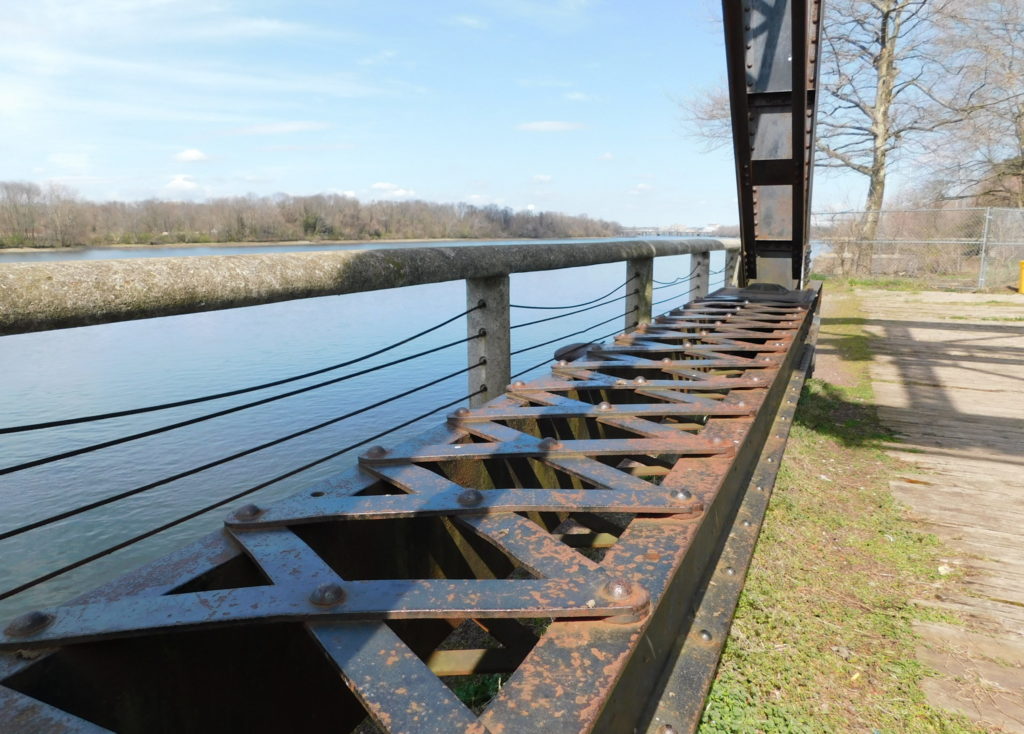
The first thing to realize is that the Hog Island cranes are no longer on Hog Island. When the United States entered World War I in 1917, a massive shipyard was set up alongside the Delaware River on Hog Island in Philadelphia to build transport and cargo ships, although none of the ships were completed before the war ended in 1918.

In 1930, Philadelphia bought Hog Island and transformed it into what is now the Philadelphia International Airport. Two of the cranes were sold and moved upriver to Trenton. At the Trenton Marine Terminal, they were used to load and unload ships for several decades before being taken out of service. Only the two gantries remain; the cranes that sat on top of them are gone. The Hog Island cranes were listed on the National Register of Historic Places in 1980.

For more on Hog Island, see The Necessity for Ruins.



